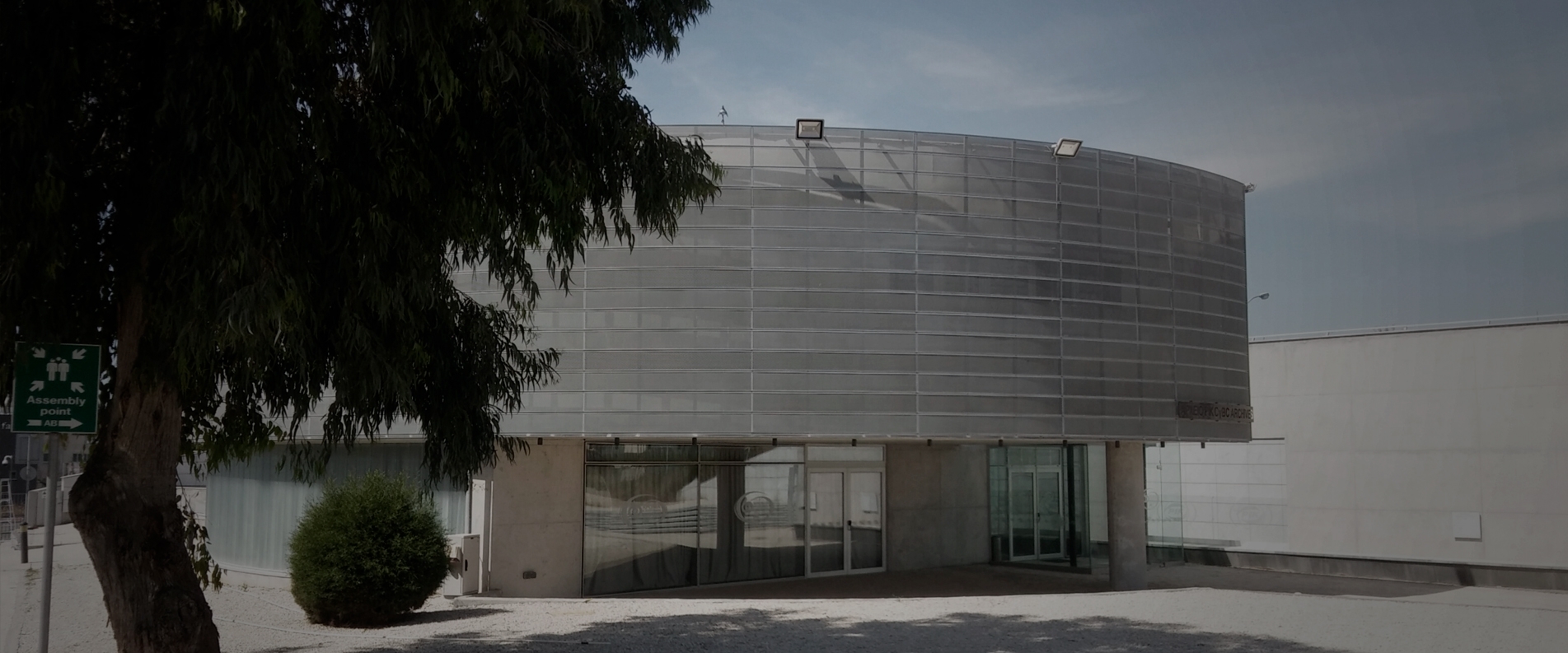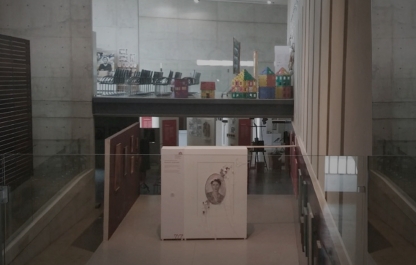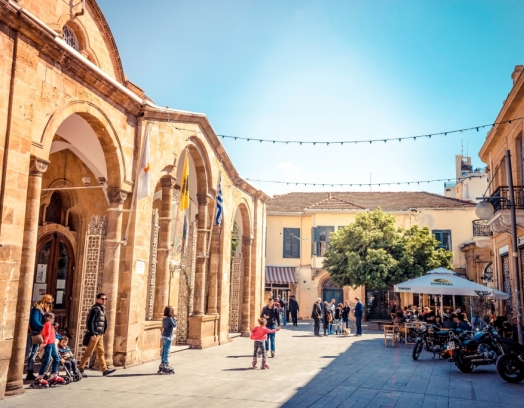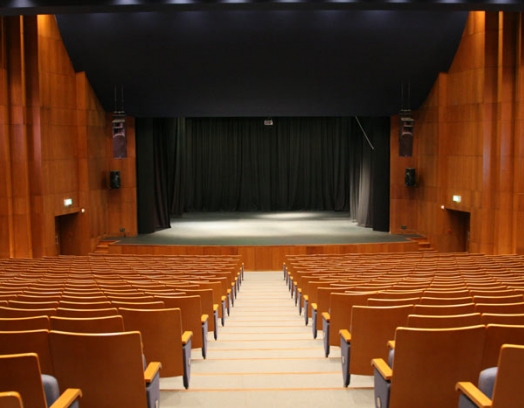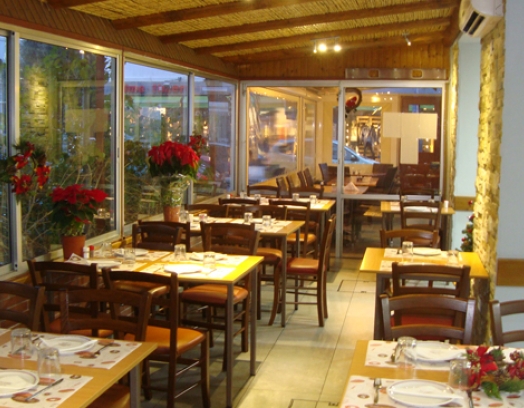You have to admit that for many of us today, as well as for several previous generations, radio and TV remain the main news sources.
Then we began to wonder: how did it all start? How is the industry evolving, as well as its technical innovations and, of course, history?
Cyprus has its own…
We visited another unique museum on the island, and are delighted to tell you about it.
How Did It All Start?
For starters, let’s take a look at its name: if you take an interest to the radio and TV of Cyprus, you will undoubtedly come across two that complement one another, or are even interchangeable in different media forms; so…the name RIK comes from the Greek Ραδιοφωνικού Ιδρύματος Κύπρου (ΡΙΚ), or Broadcasting Corporation.
And CyBC is the abbreviated version in English — Cyprus Broadcasting Corporation.
As you can see, the popular TV channel takes its name from the radio station that preceded it, and so today we know RIK and CyBC as one and the same place.
The idea for the establishment of such an exposition has been up in the air for quite some time, but the need for this was implemented only recently, in March 2016. The grand opening took place in October of the same year in the presence of, and with the participation of, the current President of the Republic, Mr. Nikos Anastasiadas. The RIK-CyBC Museum is currently positioning itself as an ongoing, retrospective exhibition of audiovisual technology.
The expo, as well as the departments and rooms accompanying it — a library [1] and reading room, an extensive archive, as well as a contemporary conference room (suitable for demonstrations) — is locating in the new TV Company’s building. Exhibition areas here occupy two floors, and are a delight for visiting museumgoers of any age.
Being displayed in the museum at the moment are a few hundred rare, and dare I say “era-defining” exhibits that are, in one way or another, related to the formation and development of mass media in Cyprus, clearly describing the country’s achievements in the television and entertainment education industries, and thus reflecting the country’s pop culture — societal life and the most important events in recent history.
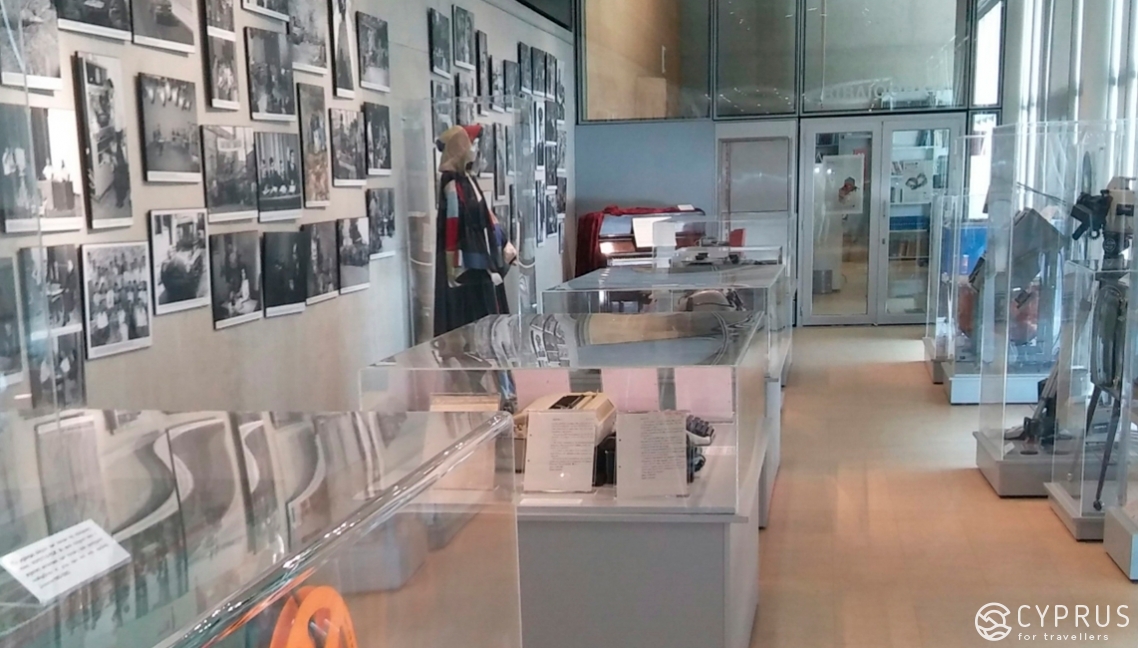
The beginnings of broadcasting in Cyprus date back to the early 1950s, namely, in the spring of 1951 when the first radio station was opened by the Colonial British government and, hence, Cyprus Broadcasting Services was established. The grand opening took place two and a half years later, on October 4, 1953, in the presence of the British consul in Cyprus.
From the earliest moments of its existence, the station has broadcasted in three languages: English, Greek, and Turkish.
Broadcasting here began its history on October 1, 1957, and on October 15th, the first television program aired.
As we well know, long-awaited nationhood was granted to the suffering population of Cyprus in 1960 and, consequently, the television and broadcasting company got its current name: Cyprus Broadcasting Corporation (CyBC).
In 1974, the television station received a strong blow to its facilities as a result of the Turkish invasion and the ongoing occupation of about 38% of the entire territory of Cyprus. During this time, several electrical substations were lost, including the central relay station on the Pentadactylos massif. Other operating facilities that served as broadcasting providers throughout the country were also hit.
However, that same year, 1974, gave rise to the furthering of the rapidly developing Cyprus Broadcasting Company both in the radio and television fields.
In 1982, black and white television broadcasts gave way to color TV, and since 2011, the analog signal has converted into a “step-by-step”, digital one.
This means that today, CyBC, which is managed by the Board of Directors (a total of 9) and is an active member of international broadcasting organizations such as EBU, CIRCOM, COPEAM, broadcasts on: a) four radio channels (a first, second, third, and “classic”), and b) three television channels (CyBC1, CyBC2, CyBC HD), as well as via satellite (CyBC Sat).
The Expo
As can be expected, at the beginning of the exposition on the upper level of the museum, there are exhibits that tell us of the appearance and beginnings of radio and TV broadcasting development in Cyprus. Among others, there are several interesting archival materials.
For example, there are newspapers (from as early as 1925) devoted to events in the country. After all, the media, as we know, developed from the need to bring information about the events to the public.
A magazine with photographs of the Corporation’s creators and first leaders can be seen immediately in one of the horizontal display cases.
Let me remind you that the radio corporation was created on July 30, 1951. At its source stood two Brits, a Greek Cypriot, and a Turkish Cypriot (you can learn more about them by contacting the archive for help).
Radio, and the stages of its development, can be traced to other exhibits: old radio channels, headphones, radios from the 1980s and 90s. There are also elements of a puppet theater: dolls, etc. In one of the vertical display cases, one of the (many!) pearls of the collection: the historical proclamation of Archbishop Makarios (from July 15, 1974, the day when the Republic of Cyprus attempted a coup).
One of the internal doors of the previous buildings (a television station), which was riddled by an automatic explosion during an attack on the island of Turkish invaders cannot fail to impress.
As you make your way down the stairs to the lower level, the main exposition space of the Museum, pay attention to the color photos of modern television shows, as well as those programs (news, political debates, etc.) that can be seen today in the broadcasting network of the RIK.
On the lower level you may see the burnt remains and crumpled structures of the destroyed buildings and engineering structures, among other things.
The most iconic, according to the organizers, is:
- The first studio video cameras that record in black and white, and then color [2] films (brands of the American company Ampex; this radio-electronic and electrical company was founded in 1944 by the Russian immigrant Alexander Ponyatov);
- A collection of puppets (you can count 20 colorful figures in the window), which took part in, the first-ever puppet show on TV in Cyprus. This puppet theater was known for its “online” productions with dolls made artificially by an interesting technology, unbeknownst to me until now: the printing technique characterized by a figure sewn from fabric; a second coating of its “face” and a layer of gypsum, and then painting; and “dressed” in fabulous costumes.
Near the window is a colorful book: Kira Rosidi’s Puppet Theater (original: Ιστοριες του παππου του γνωστικου). - An “historical”, rare English piano by Kemble, (the brand was founded in 1911 in London by Michael Campbell, and still has products in release), which was in the studio during the recording of programs on which famous musicians accompanied themselves during performances. Even more so, seeing it up close, one can’t help but feel how many creative people played this instrument’s keys, which have since turned yellow over time, with the polish and wooden surfaces rubbed away almost to holes in a number of places.
- And, of course, the massive drums of the drum kit with metal cases made of Ajax copper, belonging to the Cyprus String Instrument Orchestra (founded in 1967).
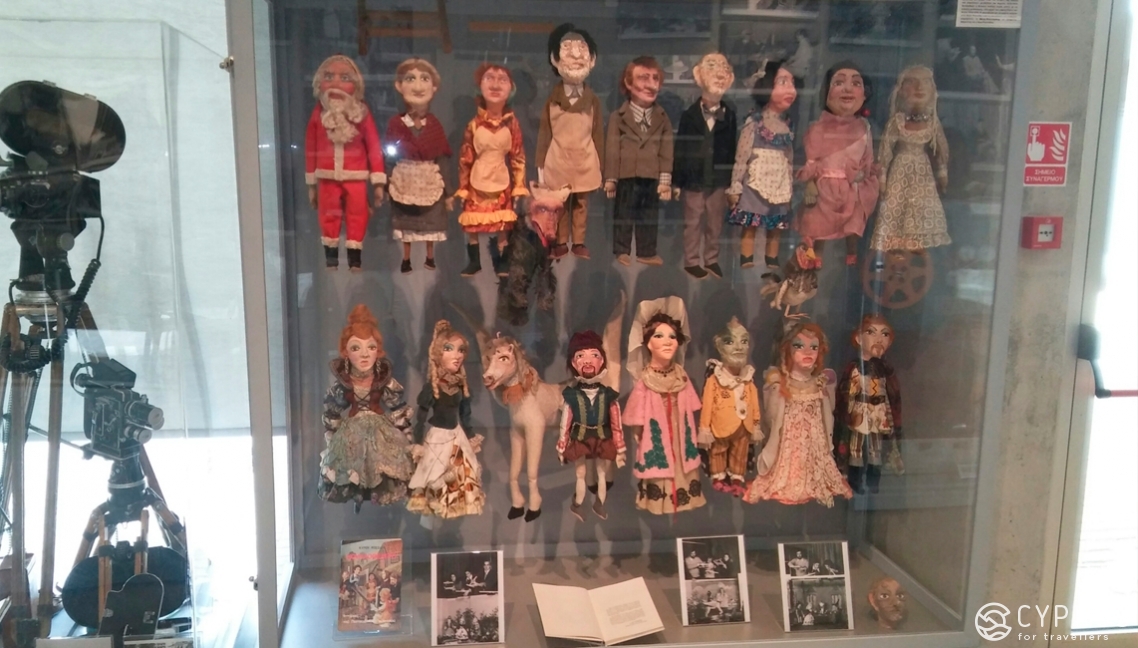
To be completely honest, I was very touched by a small model of a traditional Cypriot village house, made several decades ago by the stage designer Stefanos Afianitis, who reproduced the detailes of the decoration of television productions from the “olden days” in miniature for us. These productions were known as the “Cyprus sketches”.
You will, undoubtedly, be attracted to and made immerse yourself in contemplation, as well as in archival photographs from different years, and this might go one for a while. Among other photo documents that recorded various moments in television and radio productions, the filming of documentary and educational programs, including for children and youth (having appeared on Cyprus TV in the 1960s and continued to broadcast with the participation of children and adolescents in the following decades), we see, for example, the Soviet astronaut Y.A. Gagarin, a studio guest in one of the TV shows.
Nearby you can find footage of various television interviews and pictures from the filming of the historical TV show “Peter the First” (release date: 1994). He is not to be confused with the famous Russian figure, the Emperor Peter the Great. Here we are just talking about the actions and adventures of the Cypriot and ruler of Jerusalem from the Pierre Luzignan dynasty I (1328-1369). In Greek, the original name sounds like “Πετρος, Ο Προτως”.
What is interesting is that in its early years, television on the island broadcast for only a few hours each week and, as a rule, in the evenings (2 hours per session).
Here you will also find unique pictures of television and film stars, among other outstanding personalities from Cyprus and Greece, who had visited the TV station or had taken part in its projects — Melina Merkuri, Mikis Theodorakis, Archbishop Makarios, and many more.
By the way, fans of not only cinema and TV, but also theater, will be just as interested here. After all, the theatricality of the exposition is derived from the several theatrical characters’ costumes, which have become bright accents against the backdrop of black and white photographs.
Connoisseurs of the arts will appreciate the sample equipment and other equipment provided by the studios: photo and video cameras, microphones, sound recorders of various productions (especially many Ampex models), and, while we’re on this subject, a collection of phonograph records, as well as various films.
Even if you are far from a technology or history savant, plunging into the past which is made familiar to us by childhood memories of our grandparents’ home, no matter what country we live in, those half-forgotten glimmers of childhood will help us when we look at an “ancient” (well, today, of course,) massive radio player, one of the very first [3]; TV (Philco [4], 1970s), portable (and quite heavy) typewriters of scriptwriters; telephones with drum dialing; etc.
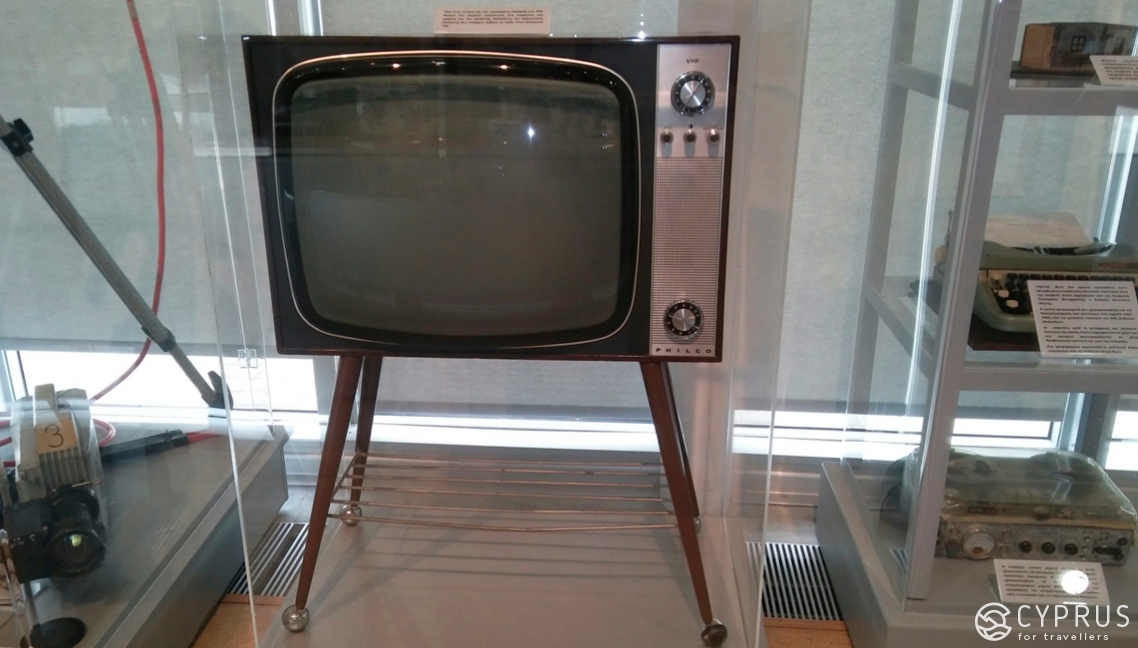
Keeping on topic, we saw: in the 1980s, for example, when shooting “field”, directors used the first portable phones with an antenna that provokes a smile with its noticeable size.
For those who are interested: free tours are held on a permanent basis (so far only available in Greek) for groups of up to 15 people, as well as individuals. Prior agreement is needed with Ms. Anna Shakkali. Contacts, as always, will be indicated at the end of the article.
In the furthest away room, behind the exhibition, are the museum’s library, archive, and reading room.
The Archive
The archive contains filed selections of volumes of old newspapers and magazines, among which can be found the first edition of the CyBC magazine “Radio Program” from December 1964. The museum’s press release emphasizes the fact that the television company is maintaining and protecting archival materials and museum exhibits on the basis of international standards and its plans include the gradual conversion of information into a digital format (which, incidentally, has already been successfully carried out), with a further increase in expenses for storage service.
The collection of the local archive, the earliest files of which in the “radio” section belong to 1953, and on “TV” to 1958, contains the following materials:
- Radio: a collection of radio archives, including programs with speech recordings and musical numbers, most of which relate to the exclusive production of RIK, while others are produced by the Greek radio ERT (ERT).
Many of them have already been digitized and registered on the server.
However, the most important piece of material is still on “traditional” media. - TV: these are numerous and varied video files, divided into two categories: a) all recordings that were ever broadcast on local television programs, and b) material that was not entered after installation.
Thus, the television archive collection is a comprehensive program: documentary films, press releases and reports, entertainment, as well as educational programs for different target audiences. All of this is produced by RIK.
Media: 16-mm film, in U-matic format, on DVCPRO cassettes.
All archive materials of the TV company are divided into three main categories, corresponding to the time of release:
1. Historical, early archive (1958-1980)
2. The “middle” period’s archive (1981-1990)
3. The modern archive (1991-present).
Interestingly enough, in this timeline, it is precisely 1991 that is considered decisive for the local radio, since the broadcasting of private radio stations has since appeared. In this regard, most of the archival materials became available from other sources. Until 1991, all the recordings of broadcast programs belonged almost exclusively to the RIK archives, making them exclusive.
Furthermore, the publication of Kiriyakos Charalampidis (for the same publication in October 1983), dedicated to the 30th anniversary of the radio station’s founding, is very interesting. In 2017, the 60th anniversary of the founding of the television company was celebrated. This is why various events were timed and various holiday and commemorative paraphernalia were filmed. These Greek vides are available here.
Well, if you were interested in our visit to the RIK Museum, here is a short excursion into the history of the issue at hand, and a few facts for those interested in mass communication technologies.
Additional information…
Let’s talk about how a radio station and a TV center work, in general.
So let’s start with the “big ones”, that is, with radio [5]: this word originates from the Latin radius or “ray”. It means: type of wireless transmission of information using radio waves.
Radio stations are called radio transmitters (radios) and some engineering structures, which, including auxiliary equipment, provide for the organization of radio communications in this place: reception and/or transmission of radio waves.
Transmissions of so-called operation information (news blocks), as well as educational and entertaining [6] (language lessons, talk shows, music broadcasts, radio shows, and concerts) for an almost unlimited audience, according to the well-known principle of “from one to many” are being conducted also via wire, or cable, channels, or on the Internet. As a rule, according to a pre-compiled schedule, or “broadcasting schedule”.
As for broadcasting, no matter what station we are listening to, we have always heard “Now on the air…”. Indeed, this phrase, and the term “broadcasting” itself, originally comes from the physical “ether” (XIX Century): a medium that hypothetically can be accessed everywhere, the vibrations of which manifest themselves in the form of electromagnetic waves.
Did you know? At the beginning of the 20th Century it was believed that the propagation of radio waves occurs in such an ether. However, soon the electromagnetic field was recognized, in fact, as a physically self-sufficient object, but the term still applied to all methods of broadcasting in a wide format.
Television (the origin of the term is interesting: from a combination of words from two ancient languages: the ancient Greek τῆλε (or far) and Latin vide (or see) is a telecommunication technology, designed to transmit images “in motion” at a distance.
Most often, simultaneously with the image, a sound series is also transmitted.
Sometime since the second half of the 20th Century, television has become the most influential medium due to its multi-functionality.
We will not be retelling the entire history of television here; we only not its significant role in business and politics. The UN World Television Day is celebrated on November 21st.
A TV program, or television program, is a video sequence that has a single plot, which is broadcast on television. Just like on radio, TV has its own schedule (usually drawn up for a week in advance), which the viewer can see today in different media.
Well, it looks like that’s it for today, folks…
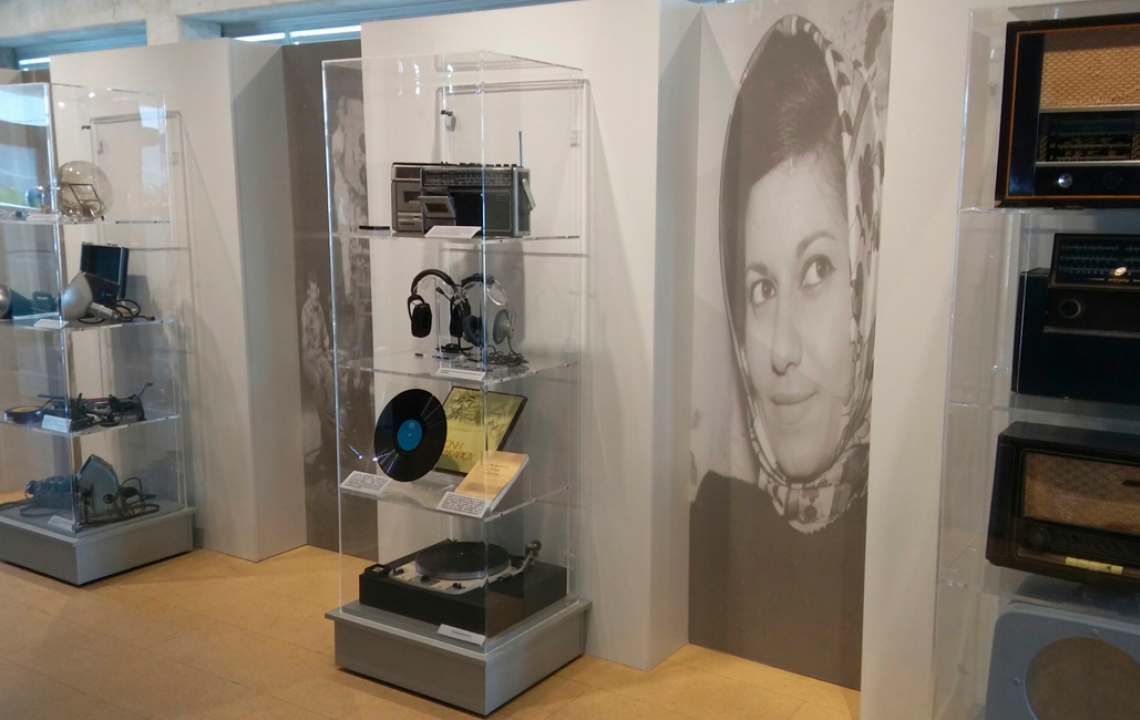
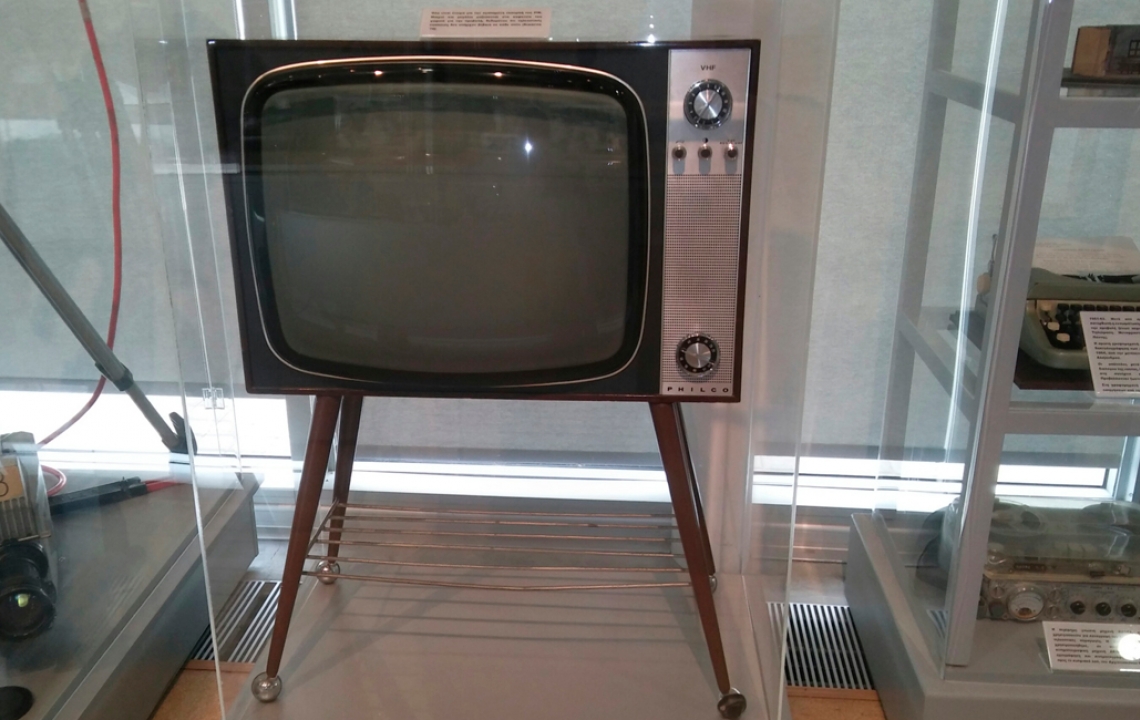
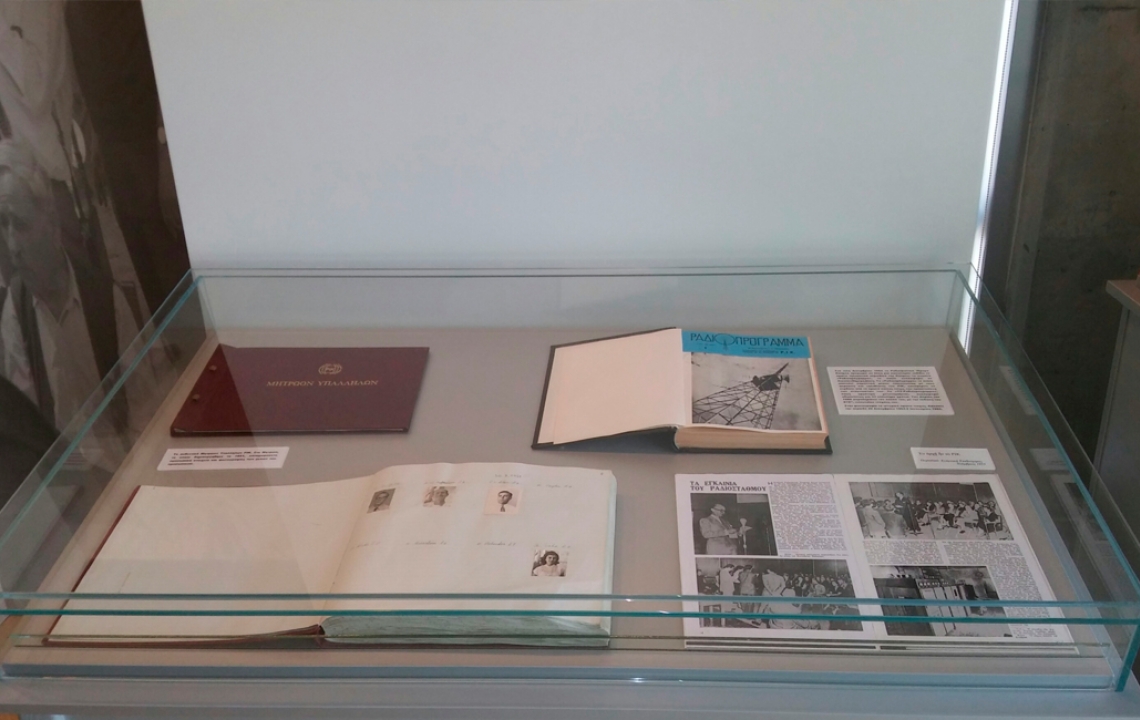
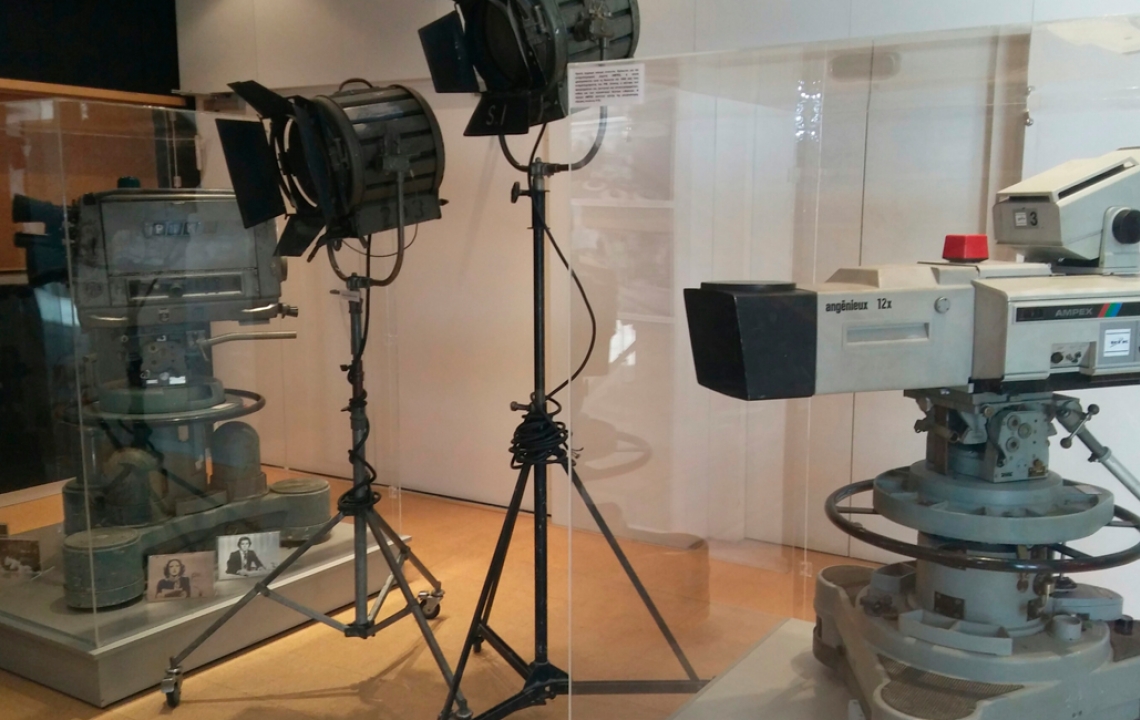
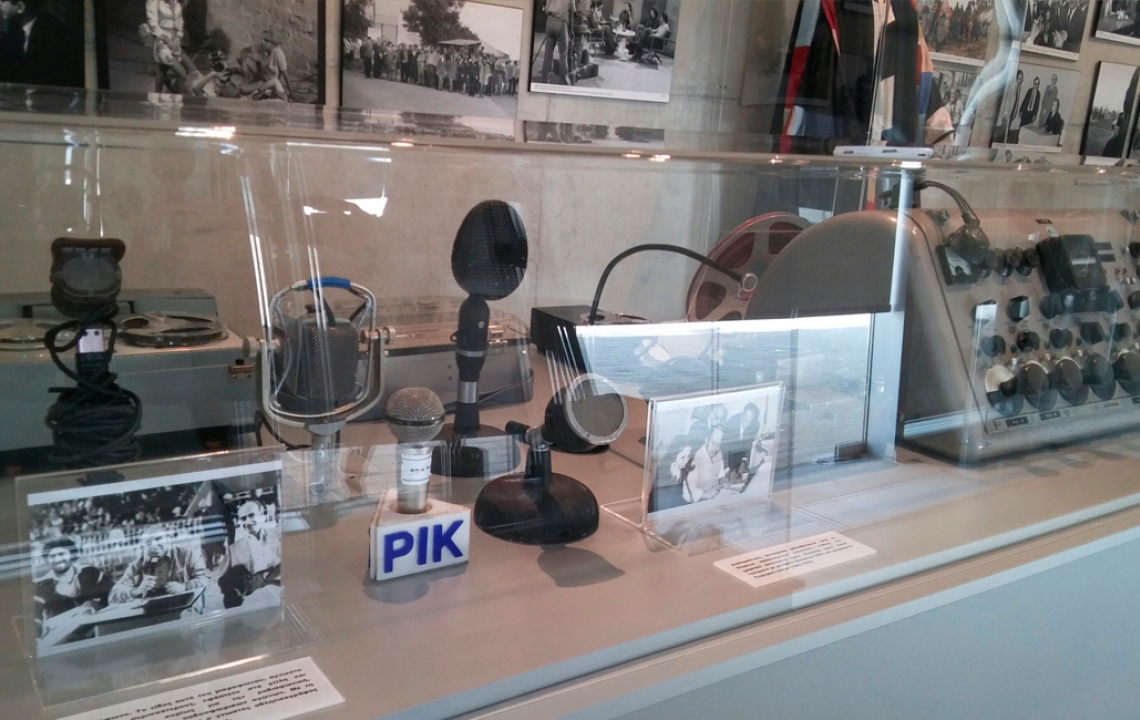
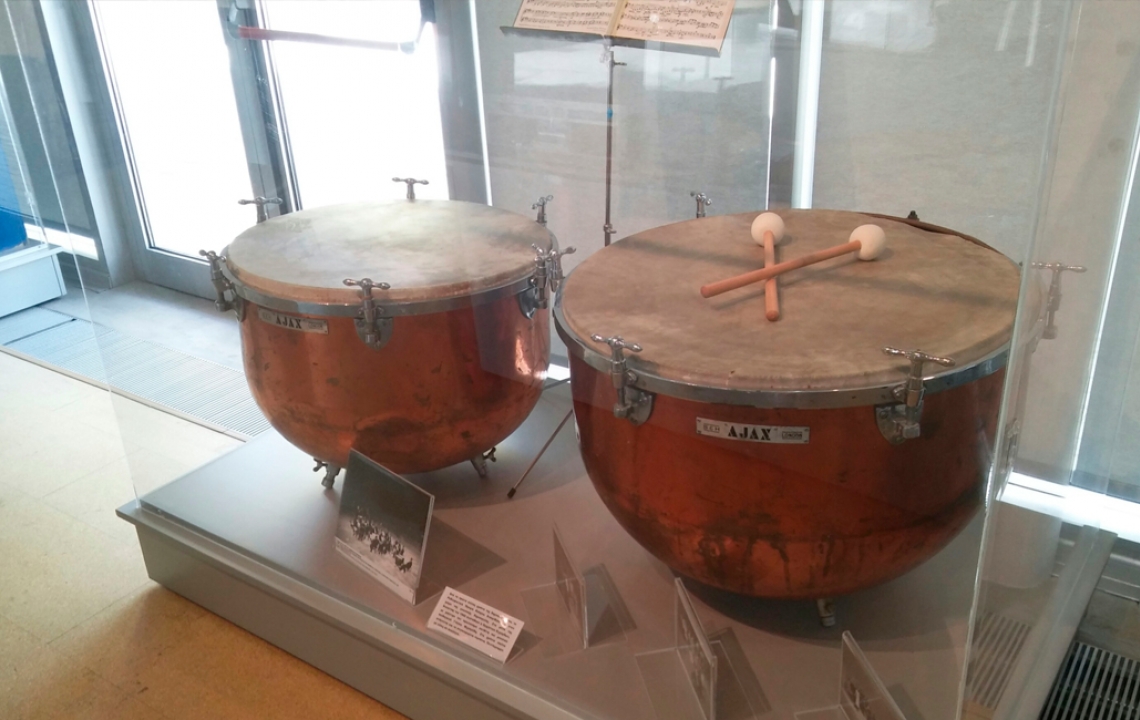
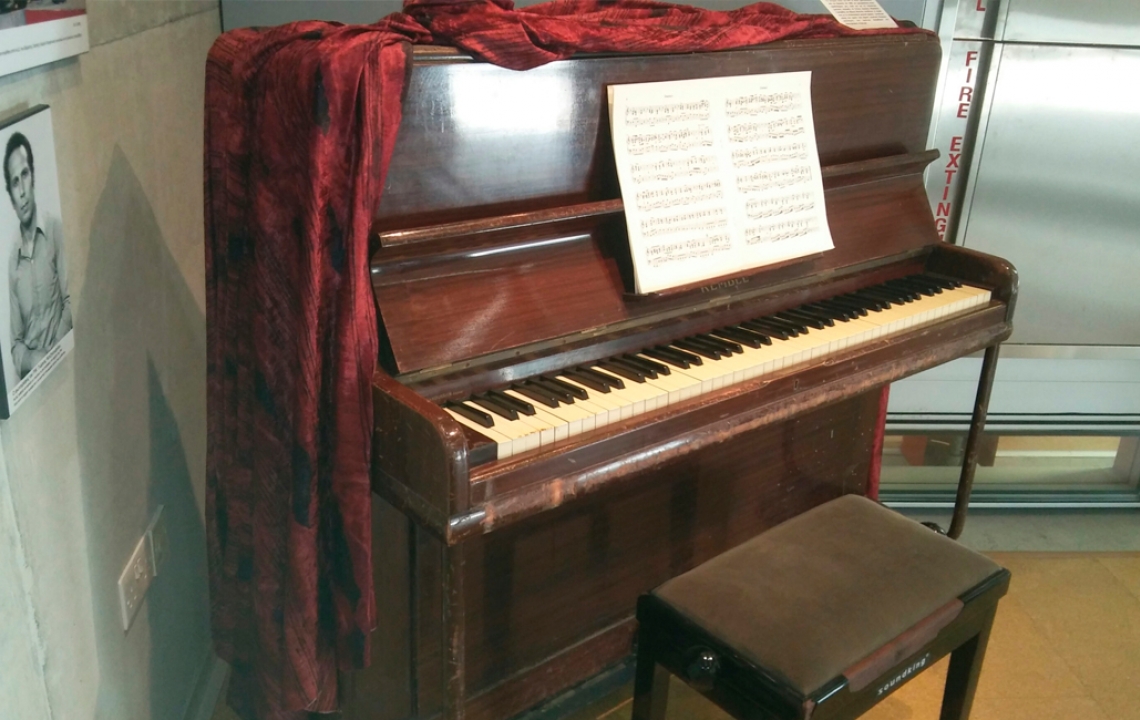
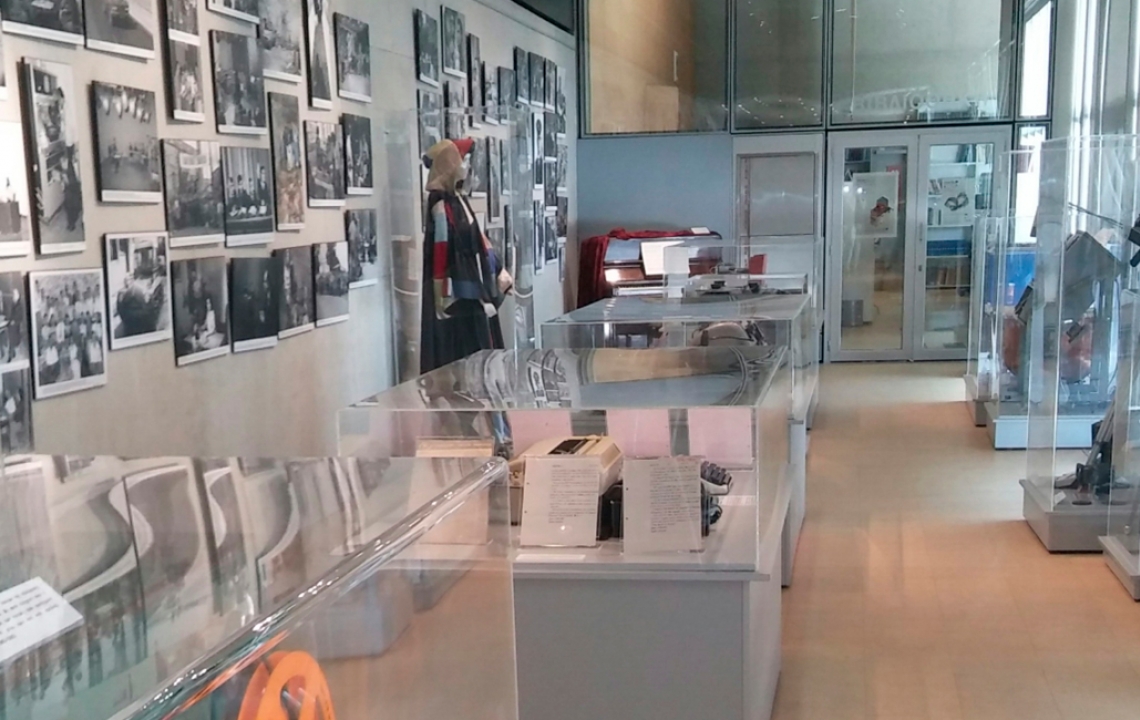
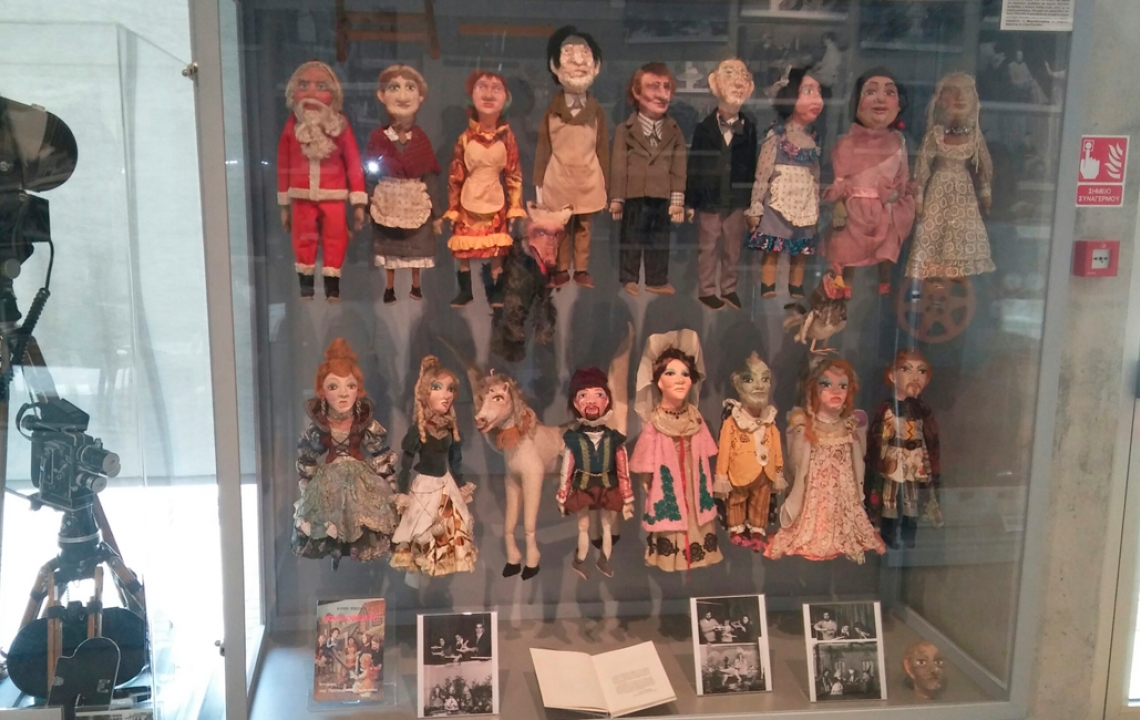
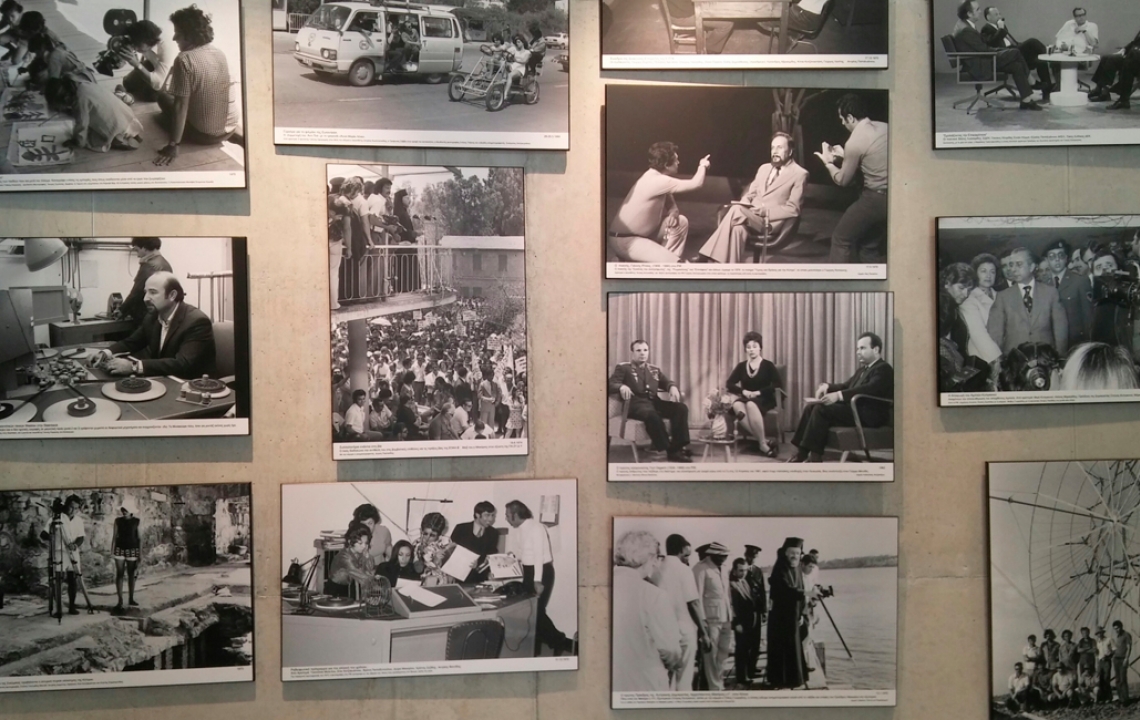
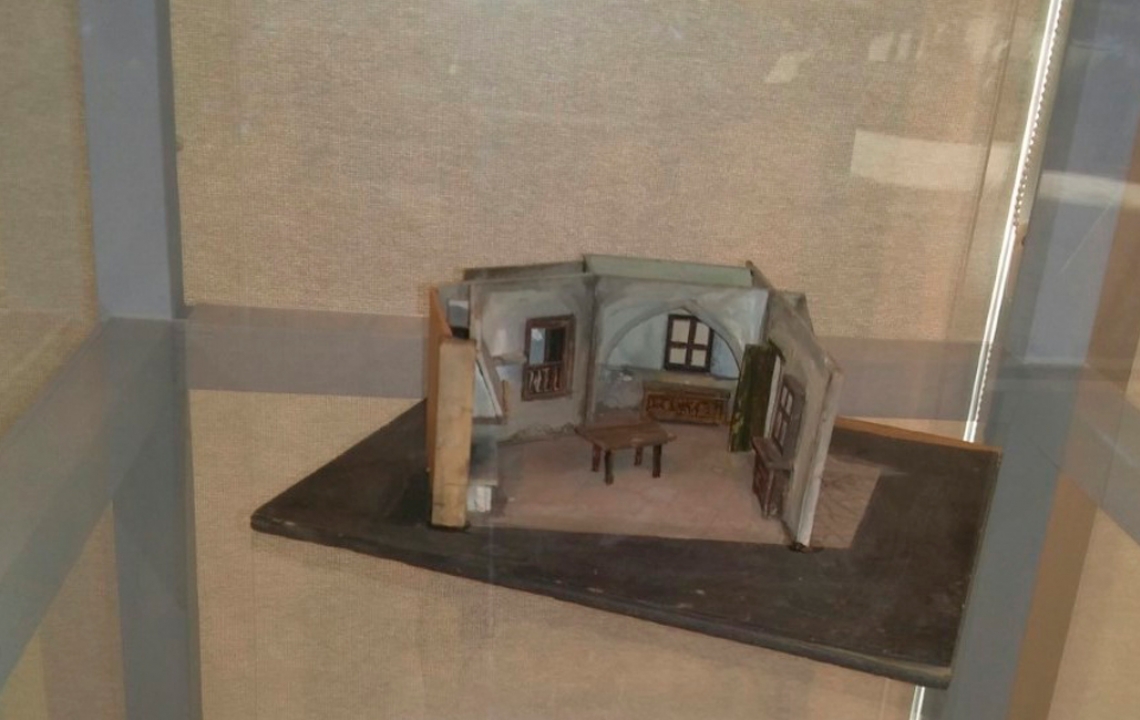
We congratulate the Cyprus Broadcasting Corporation staff on their recent 60th birthday!
We are grateful, of course, to the head of the museum, Ms. Anna Shakkali, who kindly organized a tour of the exposition and shared many interesting things; and also we would like to inform that…
…all photo materials used in prep of this article have been provided and published with permission by the CyBC Archive.
Address: RIK Avenue (RIK), Cyprus Broadcasting Corporation RIK (CyBC), Nicosia
Working Hours: Monday thru Friday, 10:00-13:00
Phone: +357 22862000, +357 22862336
Website: cybc.com.cy
Email: rikmuseum@cybc.com.cy
Facebook
Until the next discovery!
[1] Classes with schoolchildren are regularly held in the library-reading room. Here, children are offered to describe their impressions of the museum in a playful manner, and also to compose their own acrostic from the word “museum”, and to sketch their most beloved exhibit.
[2] So-called commercial color television appeared in 1963 and was marked by the launch of the first TELSTAR radio communications satellite.
[3] Turns out that 1954 is a special year for radio: the American company Regency in this year launched the first commercial transistor radio receiver TR-1.
[4] The company was founded in Philadelphia in 1892. It was a pioneer in the manufacturing of batteries, radio, and television equipment and receivers. Back in the early 1920s, Philco manufactured batteries, socket power, and chargers. Philco designed and released many iconic TV models, including the Predicta series, which began production in the 1950s.
[5] Several names of radio inventors are known all over the world, in almost every country where radio exists. For example, in Russia it was Y. Narkevich-Iodko (1890) and A.S. Popov (1895); in the USA — D. Hughes (1878), Nikola Tesla (1891), and T. Edison (1895); in Great Britain — O.J. Lodge (1894), and so forth.
The Italian G.G. Marconi (1895) is considered to be the universally recognized creator of the very first successfully-tested system for transmitting and exchanging information using radio waves.
[6] Some of you might even remember another type of program, very popular for many years in the USSR (perhaps it was also practiced in other countries), about health improvement: morning gymnastics, accompanied by piano.

